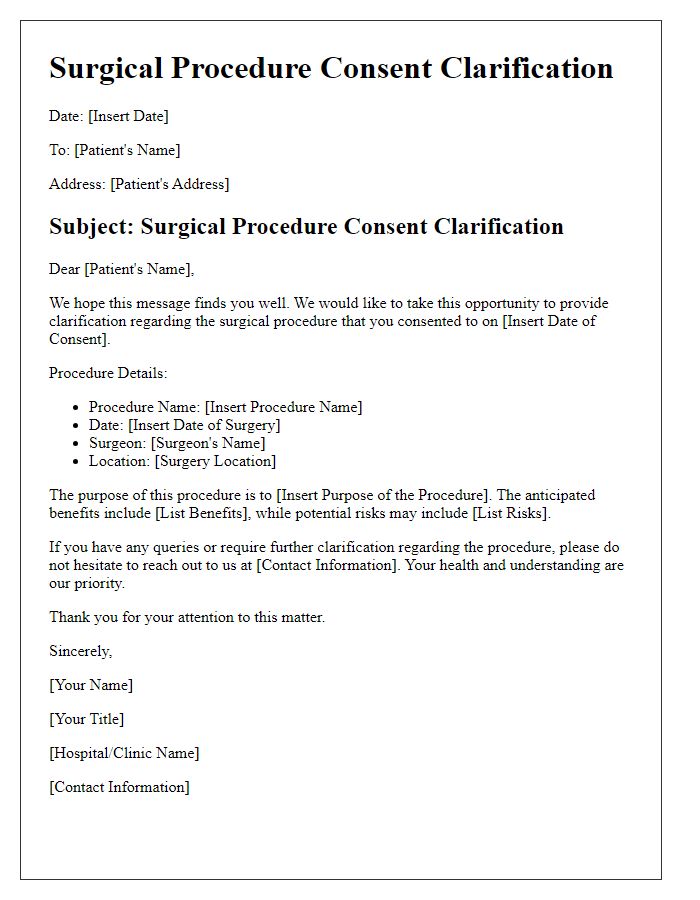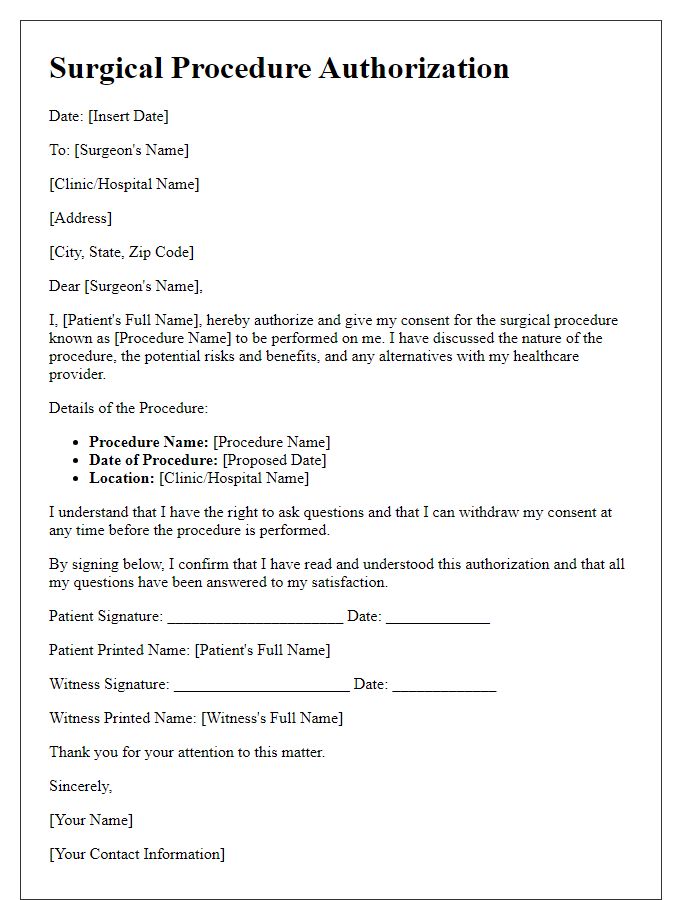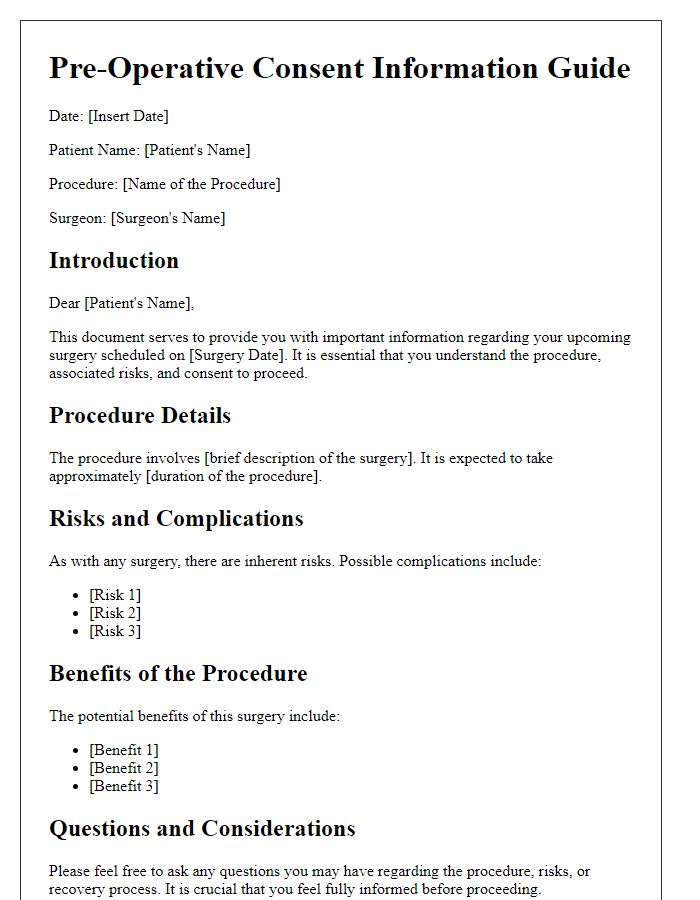When it comes to surgical procedures, understanding the surgical consent form is crucial for patients and their families. This document not only outlines the specifics of the surgery but also highlights the potential risks and benefits involved. It's important to approach this conversation with clarity and compassion, ensuring everyone feels informed and comfortable with the process. Ready to dive deeper and uncover what you need to know about surgical consent? Read on!

Patient Identification Information
Patient identification information is crucial in ensuring accuracy and safety in surgical procedures. This includes the patient's full name (matching government-issued identification documents), date of birth (to confirm age and eligibility for specific surgeries), and medical record number (unique identifier used within healthcare systems). Contact information such as phone number and email address (for appointment reminders and discharge instructions) should also be collected. Additionally, it is essential to verify the patient's insurance information (to facilitate coverage of the procedure) and emergency contact details (to ensure communication during unexpected situations). Ensuring accurate collection of this information enhances patient safety and legal compliance throughout the surgical process.
Detailed Procedure Description
Surgical consent forms outline essential information regarding the surgical procedure, emphasizing patient understanding and agreement. The procedure, often taking place in a hospital or surgical center, may involve complexities such as anesthesia administration, incision locations, and specific surgical techniques. During an appendectomy, for instance, a surgeon removes the appendix to treat appendicitis, a condition characterized by inflammation. Patients should be informed about potential risks, including infection rates (approximately 1-5% depending on the procedure type), and recovery timelines, which typically range from a few days to several weeks, depending on individual circumstances. Clear communication of the surgical approach, whether traditional open surgery or minimally invasive laparoscopic methods, ensures patients are fully aware of the implications and expected outcomes of their surgical experience.
Potential Risks and Complications
When undergoing surgical procedures, such as laparoscopic cholecystectomy, patients must be aware of potential risks and complications, which include infection (occurring in up to 5% of cases), bleeding (with possible requirement for blood transfusion), and injury to nearby organs (such as the bile duct or intestines). Anesthesia risks also exist, including allergic reactions or respiratory complications, particularly in patients with pre-existing conditions like asthma. Blood clots (deep vein thrombosis) can develop post-surgery, posing severe health risks. Awareness of these complications allows patients to make informed decisions regarding their health care.
Alternative Treatments and Options
Surgical procedures often present patients with various alternatives, including non-surgical options such as physical therapy, medication, and lifestyle modifications. For example, knee surgery may have alternatives like weight loss programs or corticosteroid injections (which can reduce inflammation) available as lower-risk interventions. In some cases, minimally invasive techniques like arthroscopy can be considered, offering fewer complications and shorter recovery times compared to open surgery. Patients should also consider the potential for watchful waiting (a strategy that involves monitoring the condition without immediate treatment) particularly in cases like prostate issues. It is crucial for patients to discuss these options comprehensively with their healthcare provider to make an informed decision tailored to their specific medical conditions and personal preferences.
Consent Confirmation and Signature
Informed consent for surgical procedures involves comprehensive explanation of risks, benefits, and alternatives relevant to operations, such as appendectomy. This process ensures that patients understand their rights and the implications of undergoing surgical intervention at healthcare facilities like Johns Hopkins Hospital. Patients typically receive detailed documentation, covering potential complications like bleeding (occurring in approximately 1-2% of cases) or infection (estimated risk of 5-10%). The consent process culminates in the patient's signature, validating understanding and agreement to proceed with surgery. Thorough documentation is vital for legal assurance and continuity of care following the procedure.













Comments